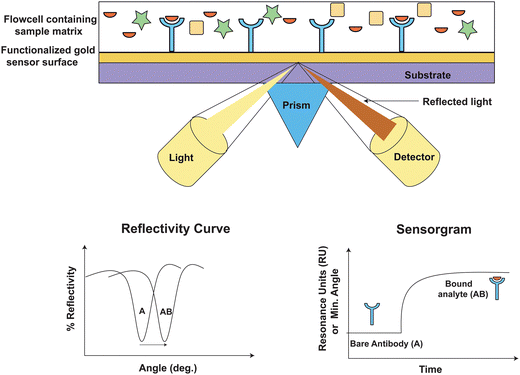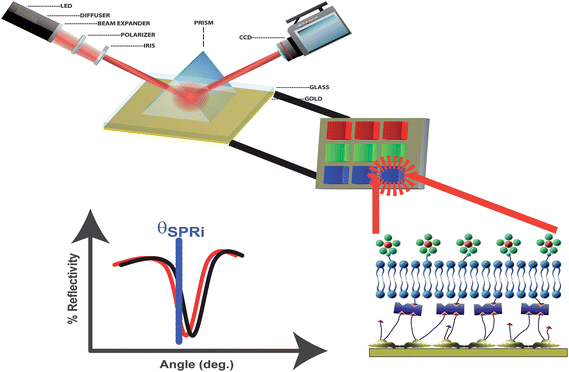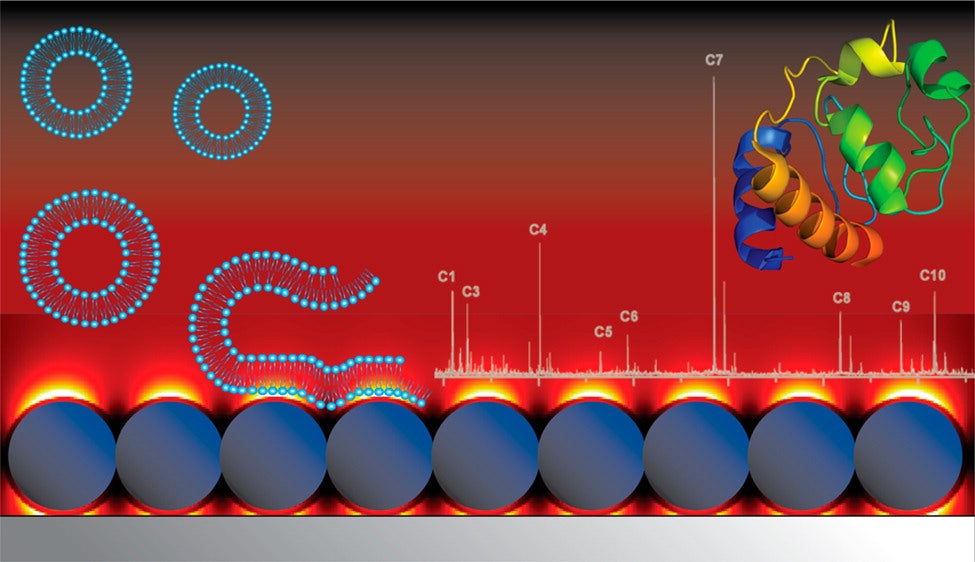Surface Plasmon Resonance Spectroscopy
SPR is a surface-sensitive analytical technique that measures small changes in the refractive index of a molecular layer adjacent to a thin metal film. A surface plasmon can be regarded as a bound evanescent wave propagating along at the metal-dielectric interface. The electric field decays exponentially normal to the plane, providing a high surface sensitivity to changes in its vicinity. SPR spectroscopy has become widely used in the fields of chemistry and biochemistry. Sensitive and capable of real time measurement, SPR is viewed as one of the foremost sensor types for direct, label-free observation of biomolecular interactions. Our lab has multiple commercial SPR instruments from NanoSPR. These models offer built-in multiplexing capabilities with refractive index sensitivities >0.00002, and their open architecture allows for the integration electrochemical equipment and custom fluidic handling devices. Our group not only designs custom assays that utilize SPR, but also novel materials which may enhance measurements and allow for hyphenation with orthogonal techniques.
Surface Plasmon Resonance Imaging
Surface plasmon imaging/microscopy is performed at a fixed angle with a variable area under investigation. The resulting 2-D image is captured with a cooled CCD camera, which allows imaging over the entire visible and near infrared spectrum. The system allows measurements with a temporal resolution of ca. 1 tenth of a second possible. The open flow cell architecture allows investigations into the influence of magnetic, electric or thermal effects on the studied systems. We have primarily utilized SPRi for imaging of microarrays for high-throughput bioanalysis. Our instrument is home-built from commercial, machined, and 3D printed parts, and may be tailored a variety of tasks and applications.
Localized Surface Plasmon Resonance
LSPR is related surface-sensitive analytical technique that measures small changes in the refractive index adjacent to a metal nanoparticle. While the evanescent field does not extend nearly as far as conventional thin film SPR, the sensitivity is significantly higher and the versatility of using nanoparticles allows for both solution and surface based assays. We are particularly interested in the integration of nanoparticles into existing analytical schemes to extend their utility and sensitivity.


